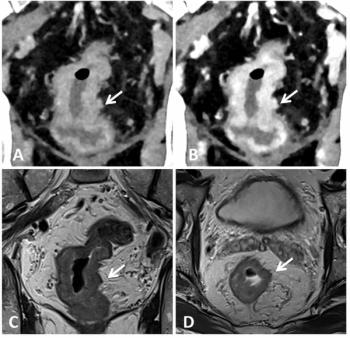
Motion artifact removal tool enhances cardiac MR images
A novel approach registers images from different scan directions to correct motion artifacts in cardiac MRI.
A novel approach registers images from different scan directions to correct motion artifacts in cardiac MRI.
In standard cardiac MRI studies, slice images are acquired from several directions, such as short-axis and four-chamber views, said Jyrki Lötjönen, Sc.D., a senior research scientist at VTT Information Technology in Tampere, Finland. To visualize the heart more accurately, the data should be registered with each other (Acad Radiol 2005;12(10):1273-1284).
When cine sequences are used to track cardiac motion, one image series is acquired during a breath-hold, typically containing slices from several time instants but from only one spatial location. There is no breathing-related motion between slices within an image series. However, if the breathing cycle phase varies at all during the acquisitions, slices from different image series will be misaligned relative to each other, and a volume-endered image will not represent the subject's true anatomy. Image registration is then required to realign the images, Lötjönen said.
In many clinical studies, each MR image slice is analyzed separately. The results are integrated using Simpson's rule to form a 3D measure. The standard way to compute the volumes of left and right ventricles is to segment the ventricles separately from each short-axis slice and to integrate the total volume using Simpson's rule.
Researchers demonstrated that if both short- and long-axis images were used to define the volumes, allowing more accurate definition of basal and apical regions of the heart, the volumes deviated up to 40 mL (about 30%) from the standard short-axis approach.
According to Lötjönen, the registration algorithm consists of two simple steps: Choose one image series randomly from all image series, and then move that image series in the direction that maximizes a similarity measure between it and all of the other image series.
"These steps are iterated until the similarity does not increase," he said.
Lötjönen said the technique will be incorporated as part of a cardiac image analysis tool. Multicenter clinical tests of the tool are scheduled to begin soon.
For more information, visit Diagnostic Imaging's
Newsletter
Stay at the forefront of radiology with the Diagnostic Imaging newsletter, delivering the latest news, clinical insights, and imaging advancements for today’s radiologists.



























